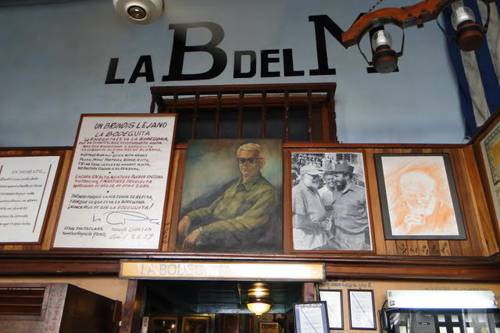
FAQ About Ernest Hemingway

Who was Ernest Hemingway?
Ernest Hemingway was an American novelist and short-story writer, born on July 21, 1899, in Oak Park, Illinois. He was renowned for his distinctive writing style, characterized by economic and understated prose, which had a significant influence on 20th-century fiction. Some of his most notable works include 'The Old Man and the Sea,' 'A Farewell to Arms,' and 'The Sun Also Rises.'

What is Ernest Hemingway’s writing style known for?
Hemingway's writing style is famously known for its brevity and clarity. He employed a technique known as the "Iceberg Theory" or "theory of omission," where he would use sparse and simple prose, focusing on surface elements without explicitly discussing the underlying themes. This style forces readers to infer deeper meanings beneath the surface dialogue and description.

Which books did Ernest Hemingway write?
Ernest Hemingway authored several famous novels and short stories. Some of his most celebrated works include 'The Old Man and the Sea,' 'The Sun Also Rises,' 'A Farewell to Arms,' 'For Whom the Bell Tolls,' and 'To Have and Have Not.' He also wrote short stories such as 'The Snows of Kilimanjaro' and 'Hills Like White Elephants.'

When did Ernest Hemingway win the Nobel Prize in Literature?
Ernest Hemingway was awarded the Nobel Prize in Literature in 1954. The Nobel Committee recognized his "mastery of the art of narrative," notably for 'The Old Man and the Sea,' and the influence his work has had on contemporary style.

What is 'The Old Man and the Sea' about?
'The Old Man and the Sea' is a novella by Ernest Hemingway that tells the story of an elderly fisherman named Santiago who engages in a relentless battle with a giant marlin in the Gulf Stream off the coast of Cuba. This story explores themes of perseverance, pride, and the struggle between man and nature.

Where did Ernest Hemingway spend much of his life?
Ernest Hemingway spent significant periods of his life in various locations around the world. Some important places include Paris, France, which was pivotal during his early writing career; Key West, Florida; and Havana, Cuba, where he wrote many of his noteworthy works. He also spent time in Spain, Italy, and Africa which influenced his writing.

How did Ernest Hemingway die?
Ernest Hemingway died on July 2, 1961, in Ketchum, Idaho. He tragically died by suicide after suffering from severe depression, paranoia, and physical health problems, which were compounded by a history of alcoholism.

Why is Ernest Hemingway considered an influential writer?
Ernest Hemingway is considered an influential writer due to his pioneering approach to prose and narrative style known as the "Iceberg Theory" or "Hemingway Code." His focus on simplicity, objectivity, and understated emotion influenced countless writers and shifted narrative techniques in modern literature, making his works staples in literary education and criticism.

What is the 'Iceberg Theory'?
The "Iceberg Theory," also known as the "theory of omission," is a style of writing credited to Ernest Hemingway. This theory likens writing to an iceberg, where the bulk of the information exists below the surface. Hemingway believed that by stripping the prose of excessive detail, the reader would sense the deeper themes and emotional complexities behind the seemingly simple storyline.

Did Ernest Hemingway have other careers besides writing?
Before becoming a renowned author, Ernest Hemingway worked as a journalist. He served as a correspondent during several major conflicts, including World War I, the Spanish Civil War, and World War II. His experiences as a journalist often informed his fictional work, providing rich real-world settings and a deep understanding of human conflict.

What were the primary themes in Hemingway’s works?
Common themes in Hemingway's works include heroism, the human struggle against nature, existentialism, love, war, and loss. His characters often face external conflicts, while also dealing with internal struggles, exploring the complexities of masculinity, courage, and the inevitability of death.

How did Hemingway's personal life influence his writing?
Ernest Hemingway's personal experiences deeply influenced his writing. His wartime experiences as an ambulance driver in World War I and as a correspondent during the Spanish Civil War and World War II provided him with material and inspiration for many of his stories. Additionally, his adventurous lifestyle and interests in activities such as hunting, fishing, and bullfighting are reflected in the vivid settings and plots of his novels.

What was Hemingway’s impact on American literature?
Hemingway's impact on American literature is profound. He revolutionized the way stories are told through his concise prose and dialogue-driven narratives. His success in portraying the complexity of human emotion and interaction through simple language has made him an enduring figure in literature, influencing generations of writers and altering narrative traditions.

Which of Hemingway's works was published posthumously?
Several of Ernest Hemingway's works were published posthumously. Notable among them is 'A Moveable Feast,' a memoir of his early years in Paris, published in 1964. Other posthumous publications include 'Islands in the Stream' and 'The Garden of Eden.'

Was Hemingway a part of the Lost Generation?
Yes, Ernest Hemingway was a central figure of the "Lost Generation," a term used to describe a group of American authors who lived in Paris during the 1920s. These writers, including people like F. Scott Fitzgerald and Gertrude Stein, expressed the disillusionment of a generation that had witnessed the destruction of World War I and were struggling with the rapidly changing modern world.

What are some common misconceptions about Hemingway's work?
A common misconception about Hemingway's work is that his simple writing style lacks depth. In reality, his minimalist approach, characterized by the "Iceberg Theory," allows subtext to carry profound meaning. Another misconception is that his characters are solely driven by machismo, while they often embody complex and thoughtful internal experiences.

What influenced Ernest Hemingway’s writing style?
Ernest Hemingway's writing style was influenced by his journalistic background, where clarity and brevity are paramount. His experiences during wartime and his interactions with other modernist writers in Paris also contributed to his straightforward narrative style. The influence of Gertrude Stein and his observational skills developed through travel and adventure also shaped his prose.

Did Hemingway serve in the military?
Ernest Hemingway did not serve as a soldier, but he was involved in World War I as an ambulance driver for the American Red Cross. This firsthand experience with war profoundly influenced his later writing, shaping the themes of conflict and heroism evident in his novels such as 'A Farewell to Arms.'

What was the relationship between Hemingway and other writers of his time?
Ernest Hemingway had complex relationships with many of his contemporaries. He worked within a vibrant expatriate community in Paris, mingling with writers like F. Scott Fitzgerald and Ezra Pound. While some relationships were collaborative, others were marked by rivalry, most famously with Fitzgerald, whom Hemingway both admired and criticized.

Where can I find more information about Ernest Hemingway’s life and works?
For a comprehensive look into Ernest Hemingway’s life and work, numerous biographies and academic studies are available. Notable biographies include 'Hemingway: A Life Without Consequences' by James R. Mellow and 'Hemingway’s Boat' by Paul Hendrickson. The Hemingway Society also provides a wealth of resources, and the John F. Kennedy Presidential Library and Museum houses an extensive Hemingway collection.
